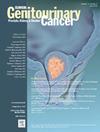Paratesticular Sarcoma: Analysis of Oncological Outcomes and Prognostic Factors
IF 2.7
3区 医学
Q3 ONCOLOGY
引用次数: 0
Abstract
Introduction and Objectives
Paratesticular sarcomas are a rare subtype of genitourinary sarcoma. Incomplete excision results in high recurrence rates. The aim of this study was to report oncological outcomes following surgery and characterize risk factors associated with poor survival.
Materials and Methods
Paratesticular sarcomas managed at a tertiary sarcoma referral center were identified. Kaplan-Meier survival curves were calculated for local recurrence-free survival (LRFS), metastasis-free survival (MFS) and disease-specific survival (DSS). Univariate analysis was used to identify predictive factors for these outcomes.
Results
A total of 56 cases were identified between 2002 and 2023. The median age at tumor resection was 63 years. Dedifferentiated liposarcoma (DDLPS) was the most common histological subtype with n = 23 (42%) patients. Of the 51 patients with localized disease at presentation, 9 (18%) developed local recurrence, 10 (20%) developed metastatic disease and 10 (20%) have died from the disease at a median follow up of 48 months (IQR 16-93). The 5-year LRFS, MFS and DSS rate was 54.4%, 60.8% and 90.8% respectively. Positive surgical margin was significantly associated with reduced LRFS (HR 3.92, P = .005). T3 stage was associated with reduced LRFS (HR 5.78, P = .022). Tumor Grade 3 was significantly associated with reduced DSS (HR 12.0, P = .038). Patients who underwent wide re-resection (WRR) due to suboptimal primary resection had equivalent LRFS (P = .5) and DSS (P = .75) compared to patients who did not require WRR.
Conclusion
Positive surgical margin status is the single most important parameter for locoregional treatment failure. In these cases, wide re-resection including hemiscrotectomy is required to achieve negative surgical margins. With better awareness, prompt referral to a specialist center which provides a multidisciplinary approach will ensure individualized treatment, risk stratification and optimal oncological outcomes.
睾丸旁肉瘤:肿瘤预后和预后因素分析
简介与目的睾丸旁肉瘤是泌尿生殖系统肉瘤中一种罕见的亚型。不完全切除导致高复发率。本研究的目的是报告手术后的肿瘤预后,并描述与生存不良相关的危险因素。材料和方法在三级肉瘤转诊中心确认了一组特发性肉瘤。Kaplan-Meier生存曲线计算局部无复发生存期(LRFS)、无转移生存期(MFS)和疾病特异性生存期(DSS)。单变量分析用于确定这些结果的预测因素。结果2002 - 2023年共发现56例。肿瘤切除时的中位年龄为63岁。去分化脂肪肉瘤(DDLPS)是最常见的组织学亚型,共有23例(42%)患者。在51例出现局限性疾病的患者中,9例(18%)发生局部复发,10例(20%)发生转移性疾病,10例(20%)在中位随访48个月时死于该疾病(IQR 16-93)。5年LRFS、MFS和DSS分别为54.4%、60.8%和90.8%。手术切缘阳性与LRFS降低显著相关(HR 3.92, P = 0.005)。T3期与LRFS降低相关(HR 5.78, P = 0.022)。肿瘤3级与DSS降低显著相关(HR 12.0, P = 0.038)。与不需要WRR的患者相比,因初级切除不理想而接受广泛再切除(WRR)的患者具有相同的LRFS (P = 0.5)和DSS (P = 0.75)。结论手术切缘阳性状态是局部治疗失败的唯一最重要参数。在这种情况下,需要广泛的再切除,包括半阴囊切除术,以达到负手术切缘。有了更好的认识,及时转诊到专科中心,提供多学科的方法,将确保个体化治疗,风险分层和最佳的肿瘤结果。
本文章由计算机程序翻译,如有差异,请以英文原文为准。
求助全文
约1分钟内获得全文
求助全文
来源期刊

Clinical genitourinary cancer
医学-泌尿学与肾脏学
CiteScore
5.20
自引率
6.20%
发文量
201
审稿时长
54 days
期刊介绍:
Clinical Genitourinary Cancer is a peer-reviewed journal that publishes original articles describing various aspects of clinical and translational research in genitourinary cancers. Clinical Genitourinary Cancer is devoted to articles on detection, diagnosis, prevention, and treatment of genitourinary cancers. The main emphasis is on recent scientific developments in all areas related to genitourinary malignancies. Specific areas of interest include clinical research and mechanistic approaches; drug sensitivity and resistance; gene and antisense therapy; pathology, markers, and prognostic indicators; chemoprevention strategies; multimodality therapy; and integration of various approaches.
 求助内容:
求助内容: 应助结果提醒方式:
应助结果提醒方式:


